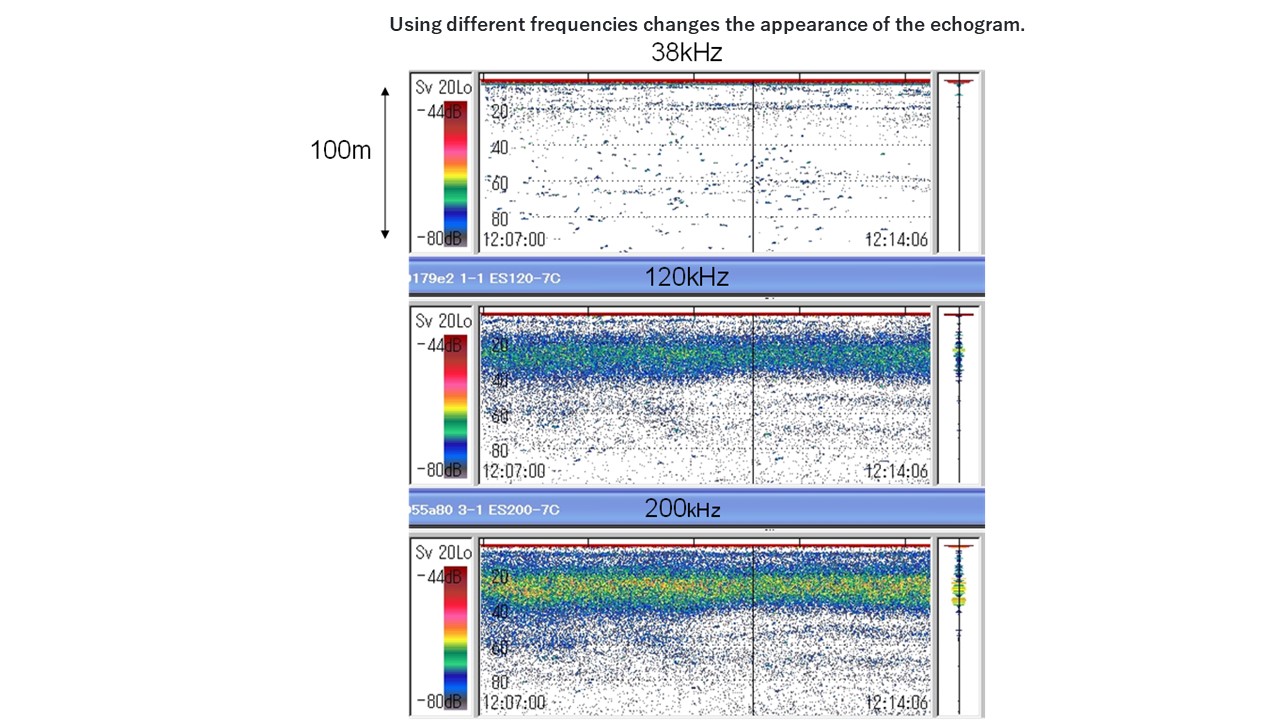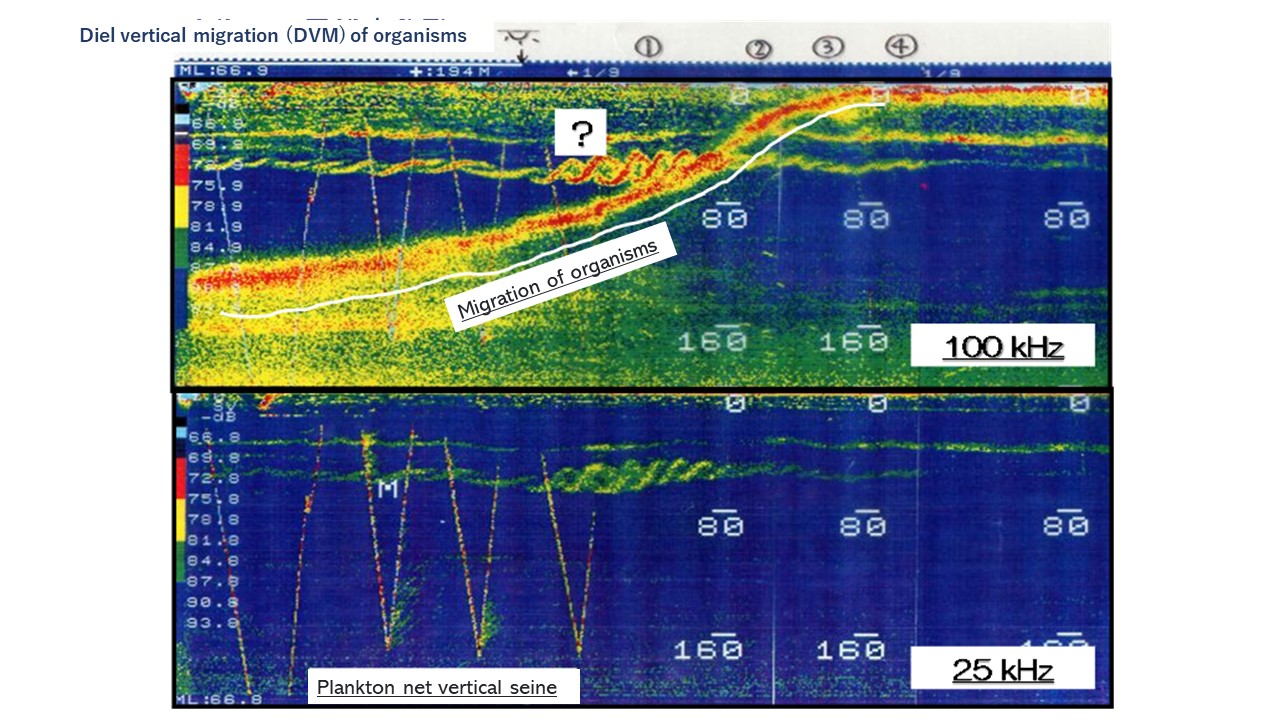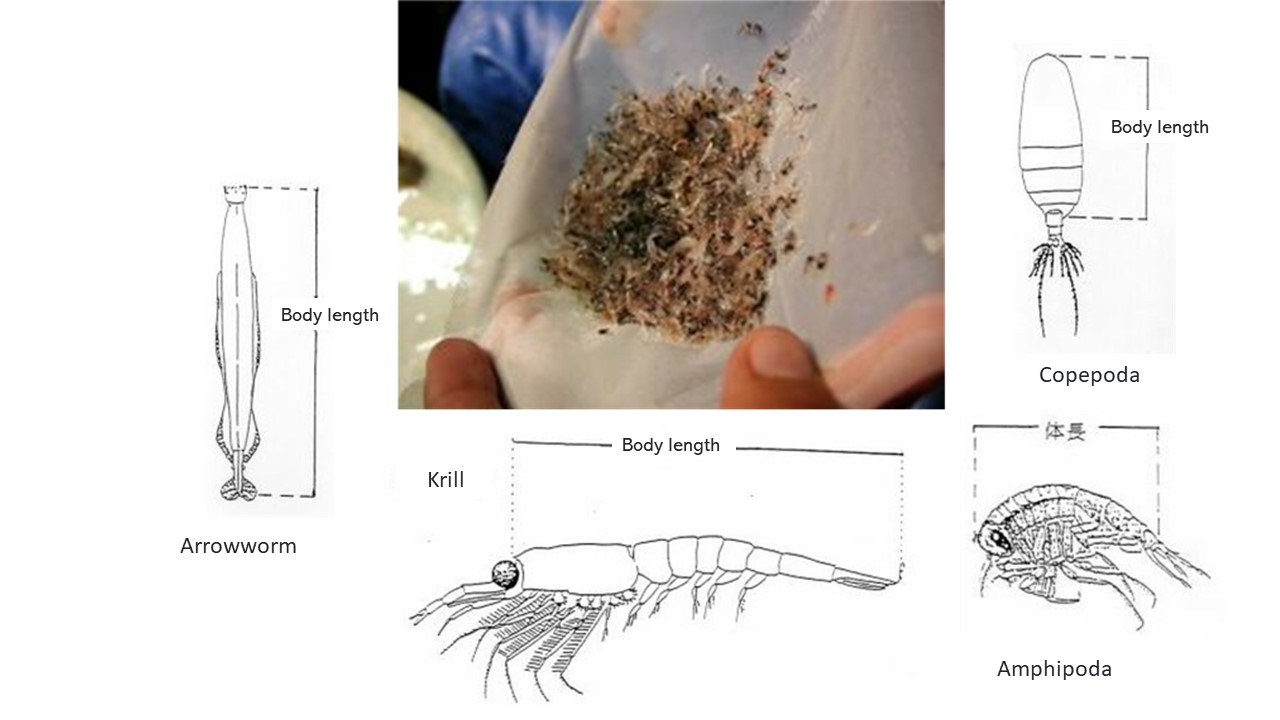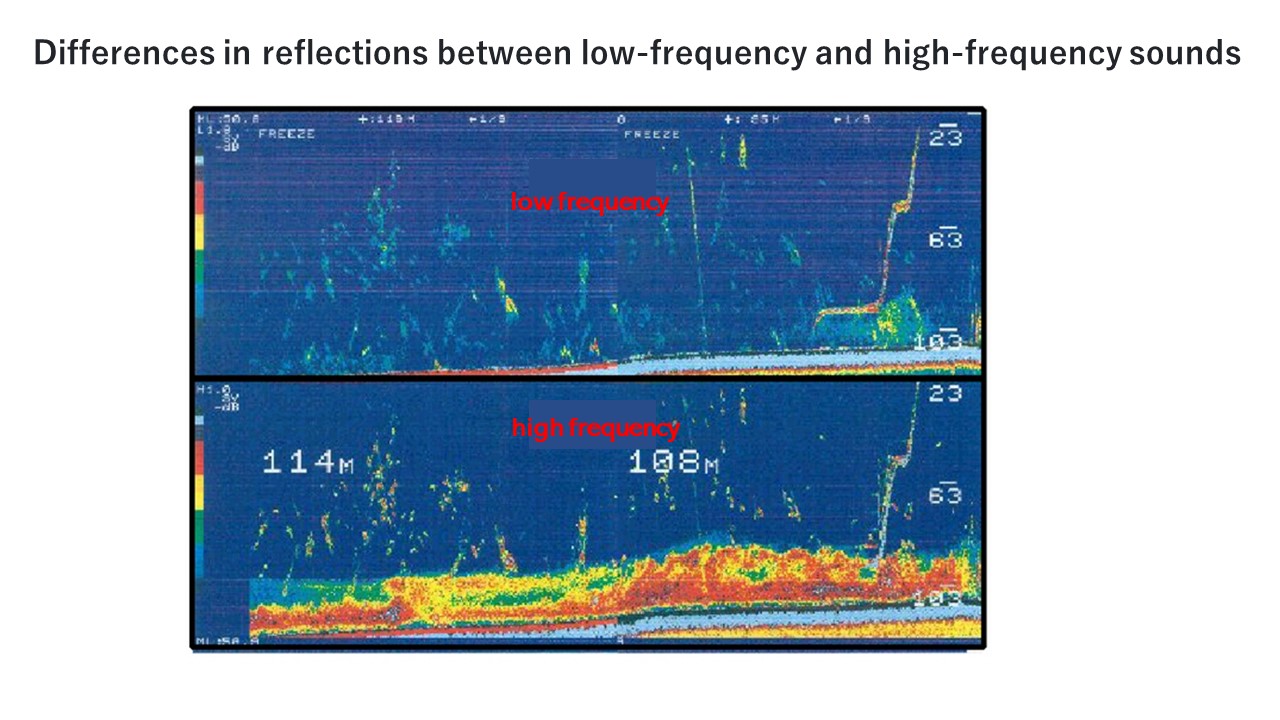Various types of fishfinders
トピックアウトライン
-
-
One way of describing what is going on in the ocean to humans using ultrasonic waves, which are invisible to the eye and inaudible to the ear, is called an echogram. See the figure below.

The horizontal direction indicates time and the vertical direction indicates depth (distance from the ship). If there is an object in the water, the sound will bounce back. The distance to the object can be determined by measuring the time between the sound and its return and multiplying it by the speed of sound. This is the same principle as the "Yamabiko". What is the speed of sound in water and in air, respectively? Also, by measuring the loudness of the returned sound, you can find out the size of the other party. When one fish is detected, it appears as a "^" on the echogram. When a large number of fish are detected, the "^" overlaps to form a school. Recently, some echograms have been developed that display the 3D position and size of fish in the sea, as shown in this echogram.
-
The appearance of the undersea appears to change when the frequency (pitch of sound) used is changed.
As shown in the echogram below, changing the height of sound emitted into the ocean changes the way we see the same place. This is due to what is called the acoustic properties of organisms. Small zooplankton such as krill become more visible at higher frequencies.

-
The echograms below were recorded simultaneously at frequencies of 100 kHz (top) and 25 kHz (bottom). They were seen just after sunset. The V-shaped echoes in both diagrams are recordings of a plankton net with an 80 cm diameter ring frame being towed vertically. In the upper echogram, we can see something moving from the leftmost depth of about 160 m to the surface. In the echoogram below, however, we cannot see it. This is another difference in response due to acoustic characteristics. The identity of this creature was confirmed by the plankton net samples, and as shown in the photograph, it was a krill or a tankard, as the name implies. On the other hand, a "spiral" echo can be seen at a depth of about 60 m. What is this? What is this?


-
Species are inferred from the difference between low-frequency and high-frequency echoes, and the inferred species are verified by other methods. For this purpose, we use actual fishing gear and remotely operated video (ROV). In the echogram below, the response seen near the seafloor only at high frequencies is predicted to be krill, and the response seen in the middle is predicted to be walleye pollock. The actual ROV can be seen at ・・・・

-
The acoustic profiler is a moored fish finder. It is battery operated and data is stored on internal media. The device is placed on the seafloor facing upward and emits ultrasonic waves upward at regular intervals to record echoes. A CT meter (a machine to measure water temperature and salinity) and a depth gauge are also installed on the frame of the device to collect environmental data at the same time.

Unlike ship-based measurements, this system can visualize underwater information continuously 24 hours a day for a long period of time, making it possible to study the diurnal behavior of organisms, seasonal differences in echoes, and echograms caused by changes in water temperature and salinity. The acoustic profiler used in this study has two frequencies, 38 kHz and 200 kHz. The instrument was originally intended for monitoring fish species at the margins of glaciers in Greenland under the ArCSII project. Since we are unable to visit the site due to the coronal disaster, we are using it in Sunahara-cho, near the Hakodate campus, as a practice run.

Below is an acoustic profiler used in another field.
-
Fishfinders mainly send and receive ultrasonic waves from the ship toward the seafloor. Scanning sonar, on the other hand, scans ultrasonic waves around the ship to detect fish schools far from the ship. Here are some echograms of both of them. In the movie below, the left side is the echogram of the fish finder and the right side is the echogram of the scanning sonar. In the echogram of the scanning sonar, the position of your ship is almost in the center of the screen. You can see a red mass moving from the top to the bottom. This red mass is a school of fish. Since the ship is currently moving, you can see that the ship is approaching the school of fish. When the ship passes almost directly over the school of fish, you can see the school of fish appear in the echogram of the fishfinder on the left side. This video shows that the scanning sonar has a very wide detection range.
-
Using a fan-shaped acoustic beam (a wide beam in one direction and a narrow beam at right angles to it), a wide beam is used to detect the sending wave to the port and starboard sides of the ship, and a wide beam is used to detect the receiving wave in the forward and backward directions (mills-cross method). This method allows us to obtain detailed information on the seafloor in a very narrow area where the transmitting and receiving waves overlap, and to study the topography of the seafloor and sediments on the seafloor. The method is equipped with a function to compensate for ship sway and sound velocity, which enables a detailed picture of the situation to be obtained. The figure below shows an acoustic image of the wreck taken by the Training Ship Oshoro-Maru.
-
These are just a few examples of the various echograms and acoustic devices we have introduced. In July 2022, the Ushio Maru, a training ship affiliated with our university, will be reborn, and it will be equipped with many state-of-the-art acoustic devices. Let's explore the wonders and possibilities of the sea by looking into the sea through sound.
